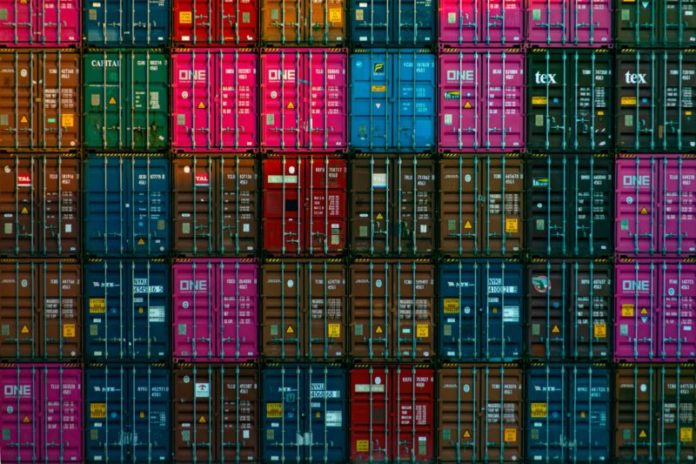
The Bureau of Customs (BOC) is temporarily suspending the implementation of a directive that requires the presence of Customs personnel during the stuffing of export containers.
The decision was made by Customs Commissioner John Phillip Sevilla during the “Update on CMO (Customs Memorandum Order) 22-2010 Section 16B Stuffing and Loading of Cargoes” forum on January 20 at the Department of Trade and Industry International Building, Makati attended by exporters and customs personnel.
“We are going to stop that requirement,” Sevilla told forum participants, adding the suspension is temporary until BOC can “figure out what to put in its place.”
Sevilla said they can amend any order under CMO 22-2010, or the Revised Customs Operations Manual, but will need to review Executive Order No. 127 to make sure they are not violating any laws.
EO 127, s. 1987, reorganized the Ministry of Finance. As such, the BOC’s functions included “exercising police authority for the enforcement of tariff and customs laws, preventing and suppressing smuggling, pilferage and all other economic frauds within all ports of entry, supervising and controlling exports, imports, foreign mails, and the clearance of vessels and aircrafts in all ports of entry administering all legal requirements that are appropriate, preventing and prosecuting smuggling and other illegal activities in all ports under its jurisdiction, exercising supervision and control over its constituent units, and performing their functions as may be provided by law.”
However, BOC-Manila International Container Port (MICP) district collector Elmir Dela Cruz clarified that exporters still need to submit a “Notice of Stuffing (NOS)” to the Customs Container Control Division (CCCD) of the port where the shipment is intended to be exported.
The decision received positive reaction from exporters at the forum. “This is consistent with our position for status quo prior to the January 5 implementation and (we are) thankful that the Commissioner is objective enough to appreciate the exporters’ issues and the difficulties for Customs to implement the policy,” Philippine Exporters Confederation, Inc. (Philexport) assistant vice president Ma. Flordeliza Leong told PortCalls.
Exporters were taken by surprise when the order was implemented early this year. BOC said it notified some exporters October last year, but not all were aware of the new policy.
Philexport sent a position paper dated January 6 to BOC requesting for a status quo and also rallied the Philippine Chamber of Commerce and Industry (PCCI) to support the advocacy that suspends container stuffing directive.
CMO 22-2010 was issued in 2010 but Sec. 16B, or the Stuffing and Loading of Cargoes, was implemented only this year among local exporters, or those outside customs bonded warehouses and economic zones. It requires that an NOS be submitted first by the exporter to the CCCD of the port where the shipment is to be shipped out. The CCCD will then send a stuffing inspector to the exporter’s warehouse. But since BOC lacks personnel the CCCD, whenever inspectors are unavailable, will notify the exporters to proceed with the stuffing and stamp “Shipper’s Load and Count” on the NOS instead. The inspection will also be random.
BOC said another purpose of the policy is to ascertain the legitimacy of the exporter and his goods.
Moreover, CMO 22-2010 Sec. 16B also requires the exporter to shoulder “all incidental expenses (allowance, meal and transportation allowance)” that will be incurred by the Customs personnel during the inspection.
A spate of troubles with stuffing rule
Philexport, in its recent letter to Commissioner Sevilla, requested for a status quo as they see a number of problems “for both implementers and private sector stakeholders, especially MSMEs (micro, small, and medium enterprises) who will again be the victims.”
For one, Philexport said inspections and monitoring stuffing of containers require tremendous resources if BOC “is to do this well and (is) corruption-free”, considering the great number of exporters and their export shipments. BOC-MICP currently only has 15 plantilla personnel to conduct inspections.
BOC said 57% of all exports are shipped through MICP while only 7% go through the Port of Manila.
Philexport also noted there are other existing BOC measures to ascertain the legitimacy of importers, such as the Client Profile Registration System. Exporters also said they undergo other inspections as required by either their foreign buyer or other government agencies such as the Department of Environment and Natural Resources.
Sevilla requested for exporters to include in their position papers the inspection requirements that they undergo, whether it be by foreign Customs offices, foreign buyers, surveyors, or other local agencies.
Other concerns raised by Philexport include those on shipment delays and rising costs that exporters are forced to deal with because of congestion; availability of inspectors for stuffing at night, on holidays, and on weekends; expenses for the Stuffing Inspector, which exporters say might not be included in the quotation since most sales contracts for exports are negotiated months ahead of shipment; and worries that the policy is a step back for the campaign to improve cross-border procedures aimed at facilitating trade. – Roumina Pablo
UPDATE ON THIS REPORT: BOC cancels stuffing policy for export cargoes
FURTHER UPDATE: Previous image has been changed in July 2022 due to possible infringement.




